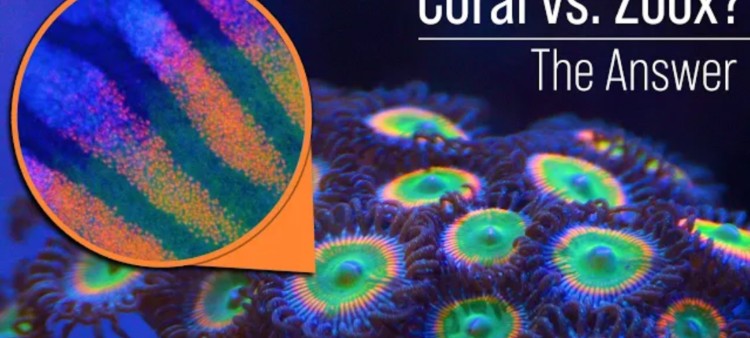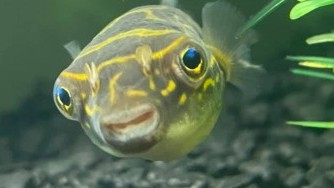Coral (Animal) v/s Zooxanthellae
- Apr 25, 2022
- Anshika Mishra
- 217 0 0

Let's answer the question: Coral (Animal) v/s Zooxanthellae. Which one are we caring for? It may seem like we are taking care of a tank filled with coral, and in many ways, we are, but deep within the coral's tissues called Zooxanthellae.
It is an alga that lives within the tissue of the coral and utilizes photosynthesis to provide as much as 90% of the energy and nutritional needs of the coral.
So, the question is, if we care for the Zooxanthellae, will the Zooxanthellae then watch for the Coral?
When we have a better understanding of how nitrogen and phosphorous influence the health of the coral and the algae that live within it, we are going to see fewer unexplained mortalities with better control of what influences the coloration of the coral.
And even more important than that, when experiencing challenges, we'll make an intuitively better decision.
Nitrogen and phosphorous are the building blocks of DNA. AMino acid molecules and every protein cell on the planet, including plant, is critical to storing cellular energy, producing chlorophyll, and turning the power into metabolic fuel for the coral.
Without Nitrogen and Phosphor, there will be no DNA, no proteins, no plants, no coral reefs, and life on Earth. And within our coral, there is an alga called Zooxanthellae.
So, if we are starving out the algae in the tank, what are we doing to the Nitrogen and Phosphorous needed? The Zooxanthellae that live within this coral provide 90% or more of the energy and nutrition that the coral needs.
So, if we take care of the Zooxanthellae, we take care of the coral, or better yet, if we are not taking care of the Zooxanthellae, how will that show up in the coral?
Understanding the Coral
The coral is an animal and has some needs related to that, i.e., oxygen, Amino acids, which are the building blocks of protein that will build all of its tissues. It also needs a source of energy or simple sugars that will support the metabolic function of the coral.
But the big question is, where does it get all these things from?
The answer is Zooxanthellae, or algae that live within the coral. It utilized photosynthesis to produce all of those things for its own needs. However, it is so efficient at producing those things that it produces way more than it can use itself and then releases all the excess into the coral to support the coral's metabolic needs.
So, what does the Zooxanthellae needs to be able to produce those Amino acids for itself as well as for the coral? The energy for itself and the coral and the oxygen or oxidants to help break down the waste?
Well, Zooxanthellae needs lights, water, carbon dioxide, a source of nitrogen and phosphorus, and another mineral that regulates the photosynthetic process.
So, this is where the true symbiotic nature of the coral and the Zooxanthellae and how they care for each other come together because the coral also takes care of the Zooxanthellae.
First obviously by providing it habitat adn a safe place to live. It also gives it water, CO2, the mineral from captured prey, and Nitrogen and Phosphate.
A symbiotic nature where they feed each other. However, Zooxanthellae can't reproduce that last 10%. It cannot produce some amino acids adn elements that coral will do by capturing prey.
Next, some of the important elements regulating the photosynthesis process are also captured as prey and then passed on to the Zooxanthellae.
So, suppose we increase the nitrate and phosphate viability in the water. In that case, you will often see more nutrition, a higher population of Zooxanthellae, and more growth from the coral.
You can see that visually or just by looking at the coral itself through test kits. So, suppose you have low nitrogen and phosphorous availability in the tank. In that case, it will often look like a pale pastel-looking coral just because there's so little of these algae living within the tissue that the natural color pigments of the coral shine through.
However, if it is too high, the high levels of Nitrogen adn phosphorus promote rapid growth of the Zooxanthellae within the tissue. As a result, it will often look like a very colorful coral.
So, the more of this you understand, the better you get at applying the knowledge.
The high density of population and all the nutrition that come with that may not be beneficial to the coral because right along with those things is the increased amount of toxins and byproducts of photosynthesis and oxidants that can harm the coral.
The coral has to get rid of those things or risk bleaching. If everything else is right, you may have a healthy coral. But if the temperature rises and the rate of metabolism go up in the coral. The more oxidants are being produced, or maybe one of the powerheads gets turned off by accident.
In such circumstances, the coral releases all the Zooxanthellae in a desperate attempt to survive.
Calcium Carbonate-Based Skeletal Structure
The coral builds the calcium carbonate-based skeletal structure by pulling ions of Calcium and ions of carbonate out of the water, combining them to create that calcium-carbonate crystal or the skeleton form on which it lays its tissues.
But phosphate is also attracted to the calcium-carbonate crystal, attaches itself to that surface, and then makes it less attractive to new calcium and carbonate ions, effectively slowing down growth. So the more phosphate in the water, the more it will poison the surface of that calcium carbonate crystal and slow down the growth of the coral, often more than you think.






About author